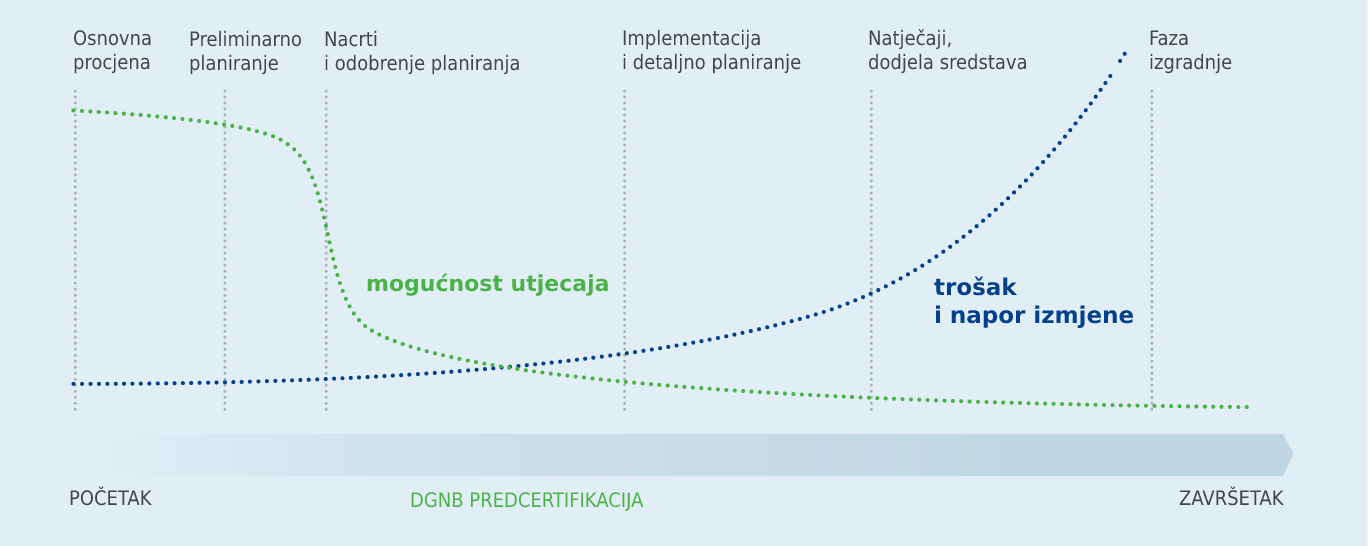Benefits of certification
DGNB represents a second-generation system compared to other international certification systems. Evaluation within the system goes beyond the environmental aspect, encompassing a holistic examination of the entire life cycle of a building or urban district.
From an economic perspective, sustainable buildings retain their value for a longer period while simultaneously incurring lower maintenance and operational costs. Research has indicated that the risks of unused spaces are minimized in sustainable buildings, and rental income can be increased. This also leads to improved market prices and higher property resale value.
Benefits for Users
Improved quality of life. Reduced additional costs.
- Healthy occupants: The DGNB system takes into account the health and well-being of occupants, contributing to a reduction in illnesses.
- Lower costs for users: The DGNB system focuses on the entire life cycle of a building from its early stages, reducing costs and optimizing operational processes. Therefore, sustainable planning can lead to long-term cost reductions.
- For future generations: Buildings with DGNB certification consume fewer resources during construction, produce lower greenhouse gas emissions, and are mostly recyclable. This reduces waste generation and contributes to environmental protection.

Benefits for Building Owners and Investors
Increased value. Reduced risks.
- Quality from the start: DGNB precertification ensures building owners and users that the building will achieve its performance goals even in the early planning phase.
- Equal consideration of economic aspects: The economic sustainability of the building is considered as important as environmental, societal, and technical efficiency aspects.
- Enhanced market opportunities: DGNB certification increases the sales and rental potential of the building, providing building owners and users with a clear indicator of top quality.
- Sustained lease demand: The growing demand for certified buildings reduces the risk of vacant spaces.
- Streamlined financing: Real estate qualifying for DGNB certification often secures loans more quickly and on better terms.
- International comparability: DGNB-certified buildings are comparable on both national and international levels.
- Accurate assessment: Individual profiles based on the standardized DGNB system are available for various building types to ensure the most suitable certification for a specific market.
Benefits for Planners and Architects
Efficient planning. Less time and effort spent.
- Promotion of integrated planning: DGNB precertification strongly supports integrated planning, offering early optimization opportunities for construction, management, conversion, and disassembly with a focus on cost optimization. The project’s focus is on quality right from the start.
- Targeted planning and monitoring: Systematic definition of sustainability goals based on DGNB criteria raises stakeholder awareness in the early stages and serves as a central quality instrument during the construction phase.
- Evaluation of overall performance: Instead of determining individual measures, DGNB sets goals for measuring the overall performance of the building and actively promotes innovative construction concepts.
Benefits for Consultants and Manufacturers
Relevance of products used in construction. Clear guidelines.
Clear innovation potential: For each relevant criterion, the DGNB system demonstrates to consultants and manufacturers the extent to which construction products impact the sustainability of the overall project. Products can thus be further developed and optimized from a sustainability perspective. Here, the emphasis is also on the entire life cycle and the long-term quality of products used in construction.
Special Benefits with DGNB Precertification
DGNB criteria should be integrated into the planning phase as early as possible.
Precertification allows for sustainability optimization right from the beginning of the process, creating an official record of this process.
This approach offers numerous advantages in terms of planning, construction, and marketing. By defining all key sustainability criteria early on, clear objectives are established for each participant in the planning team. This increases transparency, enhances risk management, and provides a foundation for planned performance goals and financing. A recognized quality label enhances the attractiveness of properties, improving their prospects for leasing and sales. This, in turn, ensures financial security for building owners and investors in the early stages of the process.

